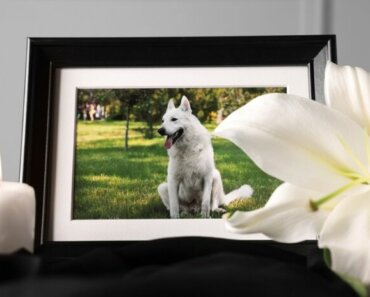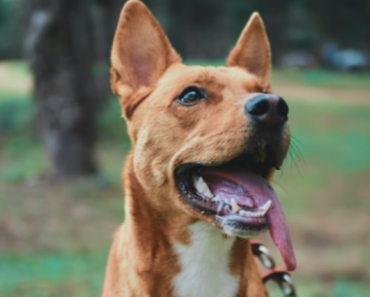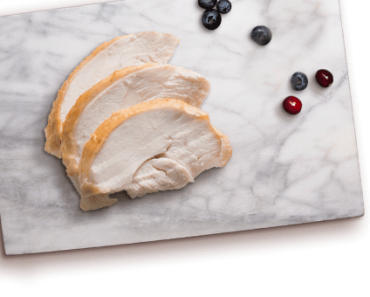
Red Tegu Lizard: Your Next Smart Pet
Are you looking for a unique and intelligent pet? Look no further than the red tegu lizard!
These South American reptiles have become increasingly popular as pets due to their friendly demeanor and ability to form bonds with their owners. In this article, we’ll explore everything you need to know about owning a red tegu lizard.
Meet the Red Tegu Lizard
The red tegu lizard is a large reptile that can grow up to four feet in length. Their name comes from the reddish-brown skin coloration on their backs, with distinctive black-and-white patterning on their faces and legs.
Red tegus are also known for their long-forked tongues that help them sense prey or danger. One of the most appealing traits of the red tegu is their intelligence.
Like dogs, they can be trained to recognize and respond to voice commands. They also have a reputation for being social creatures that enjoy interacting with humans and other animals in your household.
The Fun Facts About Red Tegus
Did you know that baby red tegus are born around six inches long? They hatch from eggs after around 100 days of incubation in temperatures ranging from 82-88 degrees Fahrenheit. Once hatched, they grow rapidly and will reach maturity at around two years old.
Red tegus are omnivorous, which means they eat both animal protein (like insects or small mammals) and plant matter (such as fruits or vegetables). It’s important to feed your pet a balanced diet consisting of both protein-rich foods like crickets or mealworms plus fresh produce like carrots or leafy greens.
One thing you might not expect about these lizards is how affectionate they can be toward their human companions. With regular handling and care, red tegus can form strong bonds with their owners.
Some even say that they enjoy cuddling and seek out affection from their human family members. So if you’re looking for a unique and intelligent pet that will truly love you back, consider a red tegu lizard!
Physical Characteristics
Description of their size, color, and unique features
Red tegu lizards are a popular choice for reptile enthusiasts due to their striking appearance. They can grow up to 4 feet in length and weigh as much as 20 pounds. Their name comes from the reddish or orange hue that is present on their bodies.
As juveniles, they have a distinct pattern of white dots on their backs which fades as they mature. One unique feature of the red tegu lizard is its forked tongue.
Similar to snakes, they use this tongue to collect scent particles in the air which then get processed by an organ in the roof of their mouth called the Jacobson’s organ. This helps them detect prey and locate mates.
Fun fact: they have a prehensile tail that can be used for balance and climbing
Another notable feature of the red tegu lizard is its prehensile tail. This means that it can wrap around objects and hold onto them securely. They use this tail for balance while walking and climbing trees in their native South American habitat.
In captivity, it’s important to provide them with branches or other climbing structures to allow them to exhibit this natural behavior. The scales on a red tegu’s body have a smooth texture compared to some other species of lizards whose scales can feel rough or bumpy when touched.
Additionally, they have long claws which are useful for digging burrows or capturing prey. Overall, red tegu lizards are visually striking animals with several unique physical features that set them apart from other reptiles.
Habitat and Diet
Discovering Their Natural Habitat in South America
The red tegu lizard is a native of South America, specifically from Brazil, Paraguay, and Argentina. They are commonly found in the rainforests and savannas. In their natural habitat, they tend to live near water sources like rivers, lakes, or swamps where they can easily hunt for food.
These lizards prefer living in warm and humid environments with temperatures ranging from 25-30°C. Red tegus love burrowing underground to feel safe or to hide from predators.
They are great climbers and love being up in high places like trees where their prehensile tails come in handy for balance. Providing such an environment for them as pets is important to recreate their natural habitat as much as possible.
The Omnivorous Diet of Red Tegus
Red tegu lizards are omnivores. They can eat a wide range of food including insects, small mammals (such as mice or rats), fruits, vegetables, eggs, and even carrion (dead animals). In the wild, they are known to be opportunistic feeders meaning they will eat whatever they can find.
Young red tegus often start by eating smaller prey such as insects before gradually moving on to bigger prey like rodents when they grow up. As adults, fruit makes up a significant part of their diet while still supplementing it with animal protein sources such as insects or small mammals.
Feeding Red Tegus in Captivity
When feeding red tegus that are kept as pets it is important to provide a healthy balanced diet that includes a variety of different foods. Offering them live food like crickets or mealworms ensures that they get an adequate source of protein which is crucial for good health.
Fruits and vegetables should also be a part of their diet. Examples of fruits they can eat include mangos, papayas, and bananas while collard greens, mustard greens and turnip greens are great examples of vegetables they can eat.
Fun Fact: Red Tegus Have a Powerful Bite!
Red tegus have strong jaws and sharp teeth that help them hunt prey in the wild. They also use their teeth to crush tough foods like hard-shelled insects or small bones.
However, when kept as pets and handled properly from a young age, red tegu lizards can become quite tame and docile creatures. It is therefore important to handle them with care to reduce the likelihood of being bitten!
Care Requirements
Temperature and Humidity
Red tegu lizards require specific temperature and humidity levels to maintain their health. The ideal temperature range for the enclosure is between 80-85 degrees Fahrenheit during the day and 70-75 degrees Fahrenheit at night.
A basking spot with a temperature of around 95 degrees Fahrenheit should also be provided so that your pet can regulate its body temperature as needed. In terms of humidity, it should usually be around 60-80%.
A hygrometer can help you measure the humidity in the enclosure, and misting the enclosure with water a few times a day can help maintain proper levels. Additionally, installing a humidifier near the enclosure could also be helpful.
Enclosure Size and Setup
A red tegu lizard requires ample space to live comfortably and thrive. As they grow to be quite large, at least an 8×4 foot custom-built enclosure will be necessary for adult red tegus.
Ensure that it has enough floor space to accommodate multiple hiding spots, climbing branches or shelves, heat lamps or bulbs, UVB light source, heating pads under hides if needed, and food dish/water bowl holder mounted on a wall rack system that keeps them off ground level (to prevent spills), etc. It’s recommended to provide a substrate such as a coconut coir or reptile bark for your pet’s comfort; the newspaper is not recommended as it does not hold moisture well enough.
Feeding
As omnivores, red tegu lizards eat both animal protein (such as insects or small rodents) and plant matter (such as fruits or vegetables). It’s important to provide a varied diet for your pet that includes these food groups in proper balance.
Feed juveniles once daily while adults can consume larger portions every two days due to their larger size. Additionally, it’s important to dust all food with a calcium supplement powder to ensure healthy bone growth.
Handling and Bathing
Red tegu lizards can be handled safely and gently with proper techniques in place. It’s important to never grab them by the tail, as it could easily detach causing harm or even death. Instead, support their body weight gently from underneath and let them crawl onto your hand.
To keep their skin healthy and free of mites, regular baths are necessary; once weekly for adults, twice a week for babies or juveniles. The water should be lukewarm (80-85 degrees Fahrenheit) and shallow so that they can stand on the bottom of the tub comfortably while submerged in water up to their mid-chest level.
Behavior and Temperament
Wild vs. Pets
Red tegu lizards are known for their curious and intelligent nature. In the wild, they spend most of their time foraging for food and exploring their surroundings. As pets, they exhibit similar behaviors but may become more socialized to humans with regular handling. However, it is important to note that red tegus can become aggressive if not handled properly or if they feel threatened. One major difference between wild and pet red tegus is the level of interaction with other animals. In the wild, they interact with a variety of creatures including insects, small mammals, and even other reptiles. As pets, owners need to be cautious when introducing them to other animals as they may exhibit territorial behavior.
Socializing with Humans and Other Animals
To ensure a well-behaved pet red tegu, it is important to socialize them early on in life. This can involve regular handling by different individuals so that they become accustomed to human contact.
Socialization should also include exposure to different environments and stimuli such as new smells or sounds. When introducing a red tegu lizard to other animals, it is important to do so slowly and under close supervision.
It is best to start with animals that are small enough not to pose a threat such as smaller dogs or cats. Over time, larger animals can be introduced but should always be monitored closely.
Fun Fact: Curious Explorers
One fun fact about red tegu lizards is that they are known for being curious creatures who enjoy exploring their surroundings. Owners should provide plenty of hiding spots and objects to climb on in their enclosure so that they can satisfy this natural instinct. In addition, red tegus have been known to recognize their owners’ voices and respond positively when called by name.
They have also been observed playing with toys and enjoying human interaction when socialized properly. Overall, red tegus make fascinating pets for those willing to put in the time and effort to properly care for them.
Common Health Issues
The Importance of Regular Vet Visits
As with any pet, it is important to bring your red tegu lizard to the vet for regular check-ups. This is especially important because tegus are prone to certain health issues. For example, they are susceptible to respiratory infections if their enclosure is not kept at the proper temperature and humidity levels.
They can also develop metabolic bone disease if they don’t receive enough calcium and vitamin D in their diet. Regular vet visits can help catch these issues early on and prevent them from becoming serious problems.
Parasites
Parasites such as mites and ticks can also be a problem for red tegu lizards. These parasites can cause skin irritation, anemia, and other health problems if left untreated.
To prevent this issue, it’s important to keep your tegu’s enclosure clean and free of debris that could attract parasites. You should also bring your lizard to the vet regularly for parasite checks and treatments if necessary.
Dehydration
Red tegu lizards require a certain level of humidity in their enclosure in order to stay healthy. If they become dehydrated, this can lead to various health issues such as dry skin, lethargy, or even organ failure in extreme cases. It’s important to provide your lizard with a water bowl or other source of hydration throughout the day as well as mist their enclosure regularly.
Conclusion
While red tegu lizards can make great pets for experienced reptile owners who are willing to put in the time and effort required for their care, there are some potential health issues that come along with owning one. However, with proper diet, husbandry practices, regular vet visits and attention paid toward any potential signs of illness or disease – the most common issues should be able to be addressed before they become too serious. By doing all of this, you can help ensure that your tegu lives a long and healthy life as your beloved pet.


























